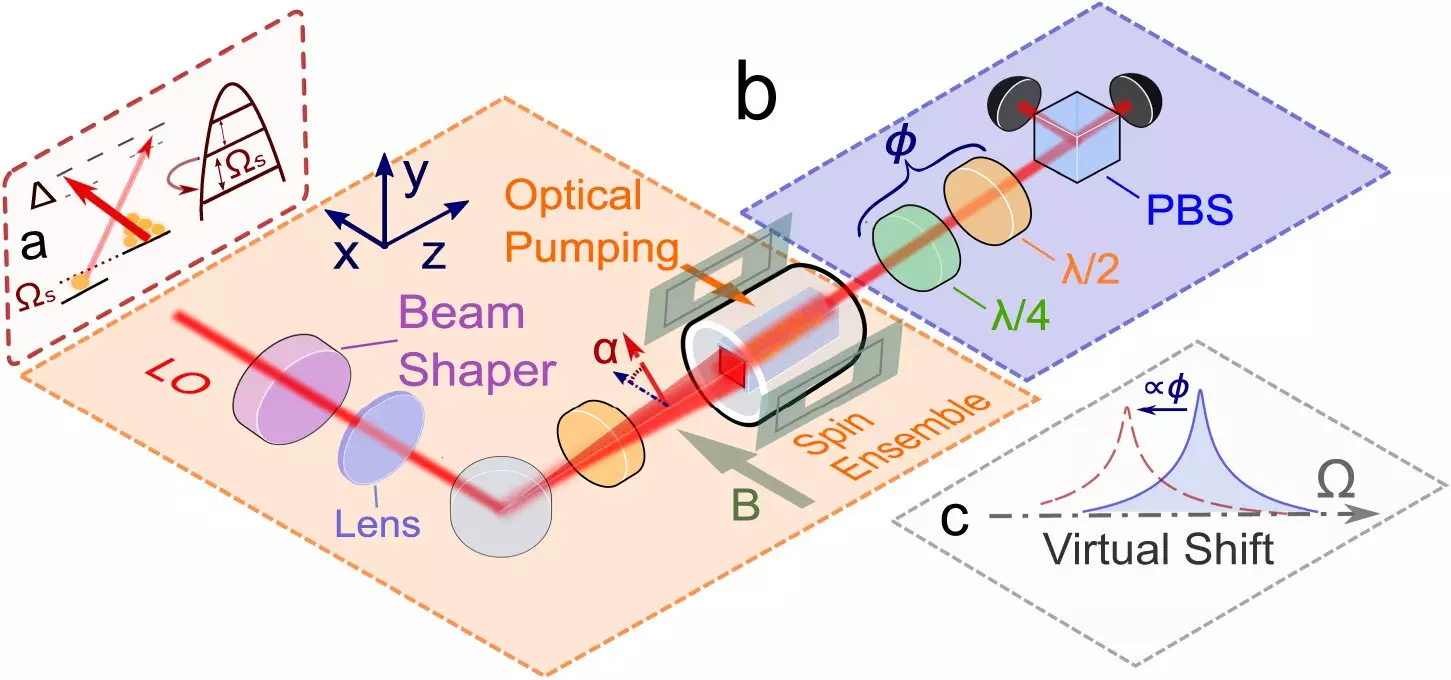Researchers from the Niels Bohr Institute (NBI) have made significant progress in the development of quantum sensors, paving the way for the creation of highly sensitive monitoring devices. These quantum sensors have the potential to revolutionize various fields, including medical examinations and gravitational wave detection, by offering unprecedented accuracy and precision. Led by Professor Eugene Polzik, the team at NBI has successfully overcome a major obstacle in distinguishing important signals from noise, bringing us one step closer to the practical implementation of these sensors.
The Potential of Quantum Sensors
Quantum sensors utilize phenomena at the atomic scale to detect and measure subtle variations in magnetic fields and tissue conductivity. These sensors have the ability to detect extremely small variations, making them ideal for monitoring the heartbeat of an unborn child and other delicate medical examinations. In addition to medical applications, quantum sensors can greatly enhance brain monitoring and offer improvements in various other fields.
The behaviors of atoms, electrons, and photons are described by quantum mechanics. Quantum sensing involves the preparation of quantum states of light as a means to read a signal. This prepared light interacts with a probe quantum system that is sensitive to the forces or fields being measured. After the interaction, the light carries the information about the measured quantity and can be detected with high accuracy.
However, one of the main challenges in quantum sensing is tailoring the engineering of the quantum probe system to fit the specific signal of interest and eliminate unwanted noise. Even after traditional sources of noise have been eliminated, quantum mechanics introduces inherent uncertainty in the measurements. Shot noise, which arises from the uncertainty associated with the arrival of light particles, and quantum backaction, which stems from the interaction itself, are sources of quantum noise that must be addressed.
A Method to Remove Quantum Noise
In their groundbreaking research, the NBI team has developed a method to “listen” to the noise arising from the quantum world and effectively remove it, allowing the true signal of interest to remain. By understanding the noise and its sources, the team has made significant strides in improving the reliability and accuracy of quantum sensors.
Apart from medical examinations, magnetic quantum sensors have the potential for various applications in different fields. One promising application is the detection of gravitational waves. Originally predicted by Albert Einstein, the existence of cosmic gravitational waves is now well established, but their detection remains challenging due to their weak signature. By combining magnetic quantum sensors with gravitational wave antennas, we may be able to overcome this challenge and gain deeper insights into the origin and development of the universe.
The research conducted by the Niels Bohr Institute brings us closer to unlocking the full potential of quantum sensors. Through their innovative methods, the team has addressed the challenges of noise in quantum sensing, paving the way for practical implementations in the near future. With applications ranging from medical examinations to gravitational wave detection, these sensors have the potential to revolutionize various fields of study and provide us with unprecedented accuracy and knowledge. The breakthrough achieved by the NBI team sets the stage for further advancements in quantum sensor technology, offering new possibilities for scientific exploration and understanding.


Leave a Reply